This is the forecast of possible meteor activity of the meteor stream related to the comet 46P/Wirtanen. This comet hasn’t produced any known meteor activity on Earth. However it’s orbit has been relatively close to the Earth’s one since 1986 and the analysis of its trails evolution showed that there is slight possibility of meteor activity from 1967 and 1974 trails in 2023 and some reasonable chance for small outburst in 2024 due to encounter to 1974 trail of the comet 46P/Wirtanen.
The comet 46P/Wirtanen orbit has been relatively close to the orbit of the Earth since the year 1986, when its orbit was pulled by Jupiter closer to the Earth’s one. Its perihelion distance decreased from 1.61 AU in 1967 to 1.08 in 1986. After that the orbit of the comet 46P/Wirtanen remained relatively stable, its last perihelion was in 2018 and the next one is expected in 2024, both at the nearly the same perihelion distance of ~1.055 AU with the MOID of ~0.071 AU.
Such a distance is still quite large to hope for encounters with most dense dust material close to the comet but some particles with higher ejection velocities could reach the Earth. Such particles are smaller and not so abundant as the particles with low ejection velocities which are usually situated closer to the parent comet, but as the comet 46P/Wirtanen is relatively large and active it could produce enough numbers of particles with high ejection velocity allowing some detectable activity when the Earth encounters its trail parts formed by such particles.
The computation of orbital evolution was made using the software program Comet’s Dust 2.0 made by S. Shanov and S. Dubrovsky. The result of this computations show that particles ejected by the comet 46P/Wirtanen showed that in 2023 and 2024 the Earth is expected to encounter some dust trails of the comet 46P/Wirtanen.
For 2023 two encounters are found at 20:55 UT on December 10 and at 17:54 UT on December 12, but for both of them the parameters are not favorable, so it is very possible that no activity would occur. But still it is desirable to check them.
For 2024 one encounter is found at 2:21 UT on December 13. The activity prospects look to be much more favorable for this encounter and while no high activity is expected the chances for small but still observable activity with rough ZHR estimation of 10-20 seem to be reasonably high.
2023
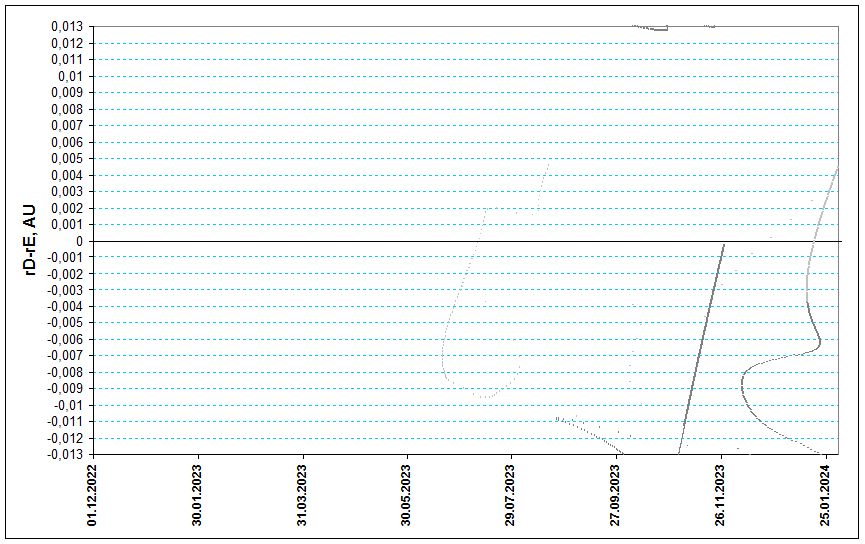
Fig. 1. Space-temporal projection of 46P-ids trails parts onto their minimal distance passages in 2023 before perihelion.
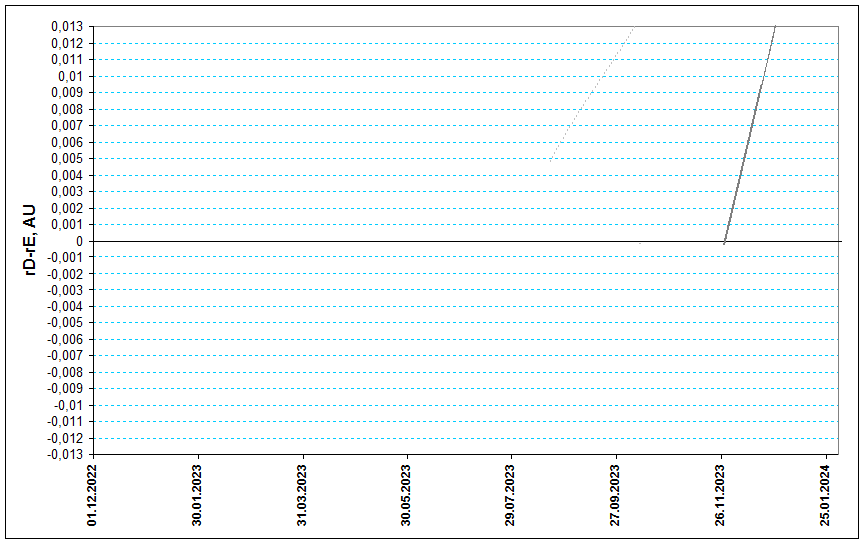
Fig. 2. Space-temporal projection of 46P-ids trails parts onto their minimal distance passages in 2023 after perihelion
Two remarkable encounters of the Earth with dust trails of the comet 46P/Wirtanen are found for 2023. The first of them is the encounter to particles of the 1967 trail:
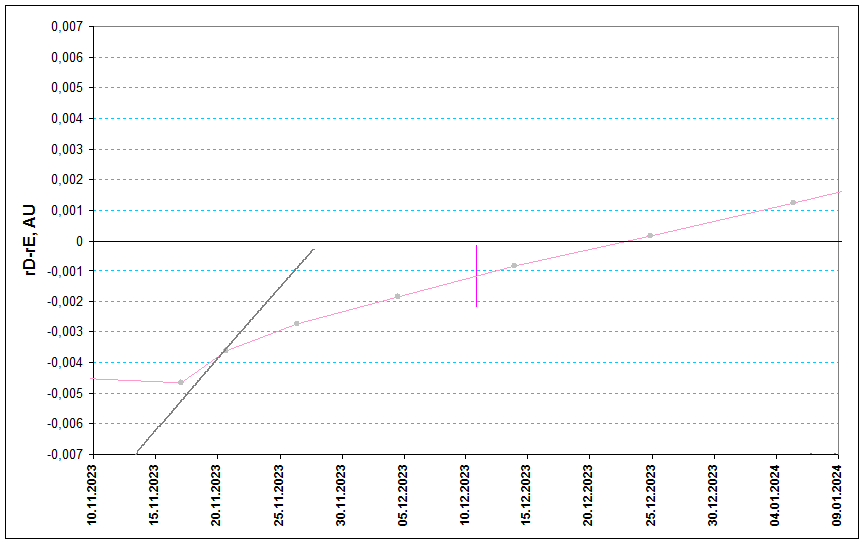
Fig. 3. Detailed space-temporal projection of 1967 trail parts onto their minimal distance passages in 2023.
Computed maximum time for 1967 trail is 20:55 UT on December 10 from the radiant RA=346.5°, Dec=+27.4°. The Earth is to pass from quite small distance from the trail, which is 0.0016 AU. However ejection velocity of this trail particles is 58.7 m/s which is quite high meaning that particles sizes are small, so meteors from it are expected to be very faint. Also the density of this part of 1967 is very low, it is about 1.8% of density of 1 revolution Leonids trail. Considering these parameters chances for any detectable activity from this trail is low but any observations still seem to be desirable.
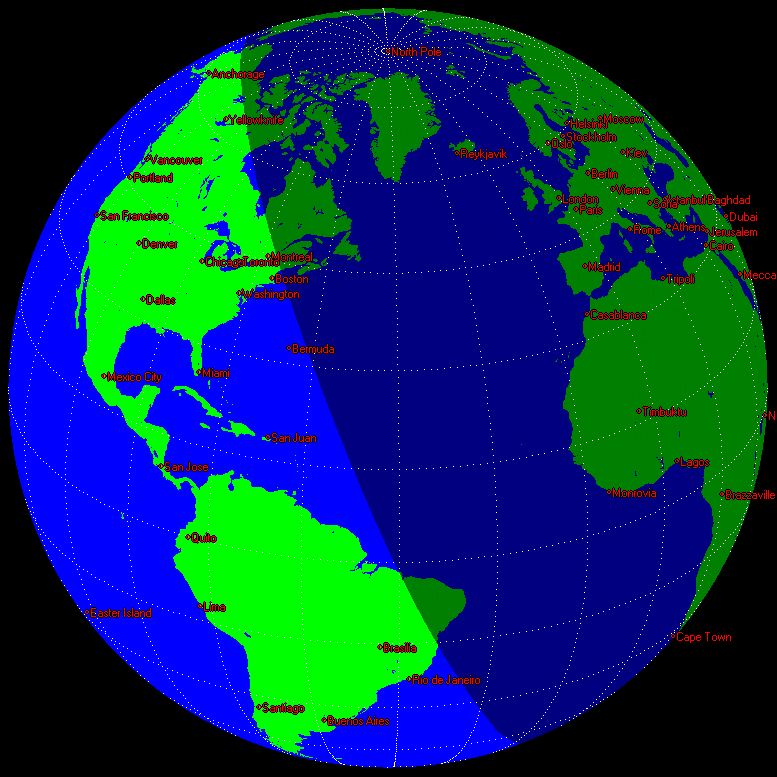
Fig. 4. The Earth as seen from coming 46P-ids meteors (RA=346.5°, Dec=+27.4°) during the expected maximum time of outburst from 1967 trail at 20:55 UT 10 December. The image is made using the software program Xearth 1.1.0 by Hewgill G.
When activity from 1967 trail occurs at the computed time the best time for its observation would be western part of Africa and Western Europe. In Eastern Europe the radiant would be also above horizon but lower. Quite high the radiant would be above Iceland including Greenland.
The second trail encountering the Earth in 2023 is 1974 trail:
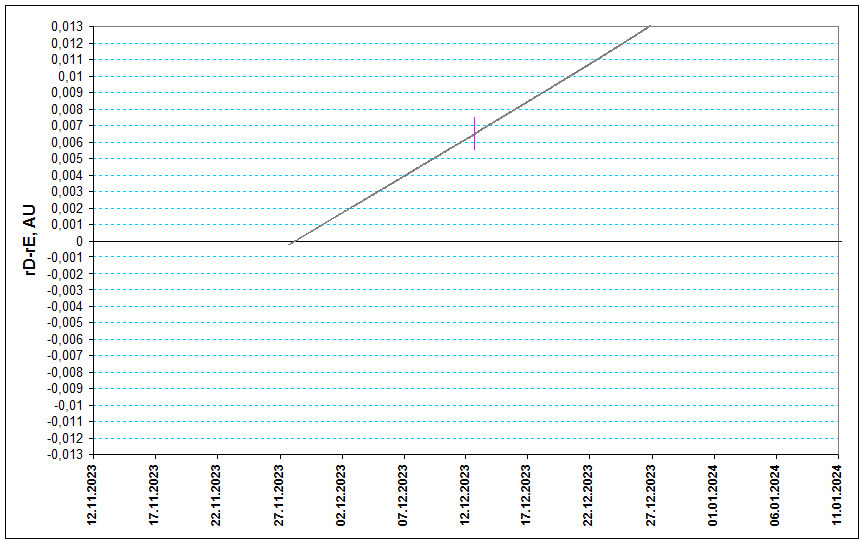
Fig. 5. Detailed space-temporal projection of 1974 trail parts onto their minimal distance passages in 2023.
Computed time of maximum from this trail is 17:54 UT on December 12 with the radiant RA=7.7°, Dec=-40.0°. The orbit of the comet 46P significantly change from 1967 to 1974 perihelia therefore there is large difference between the orbits of respective trails as well as between their radiants positions in the sky, especially in declinations. At the same time the 1974 trail is considerably more dense, 170 times, than the 1967 trail while ejection velocity is much slower, 27.2 m/s, which is also a positive factor for activity perspectives. The main problems with this encounter questioning any perspectives of activity at all, is significant distance to the Earth which this trail passes at, it is 0.00646 AU. Nevertheless it is also desirable to check this case with observations.
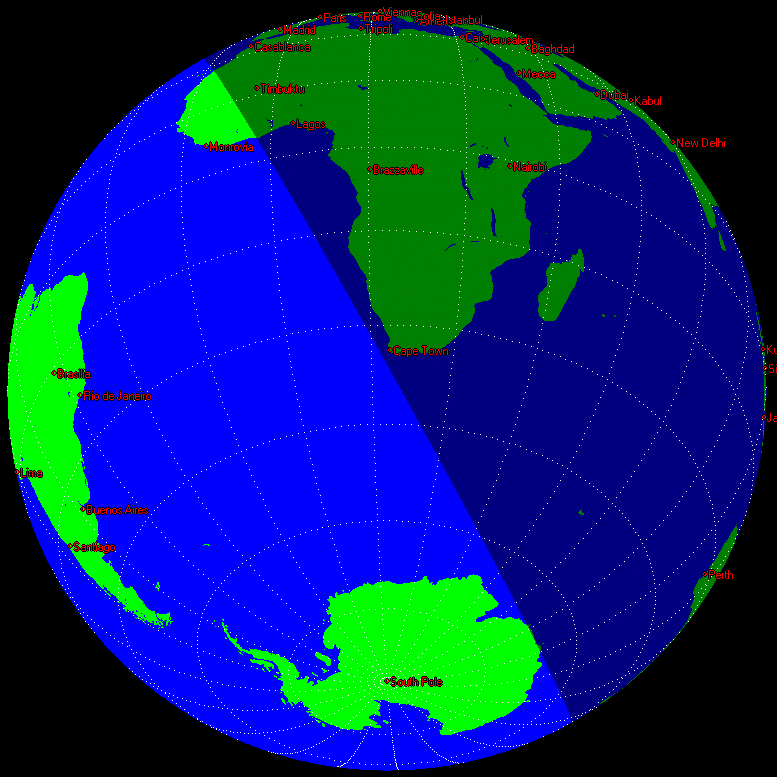
Fig. 6. The Earth as seen from coming 46P-ids meteors (RA=7.7°, Dec=-40.0°) during the expected maximum time of outburst from 1974 trail at 17:54 UT 12 December. The image is made using the software program Xearth 1.1.0 by Hewgill G.
As the radiant of this trail is deep in the southern hemisphere its visiblity is also worse. It would be visibly only in Africa, excluding its western, southern and northern edges, as well as on adjacent territories like Madagaskar island and Arabian peninsula.
2024
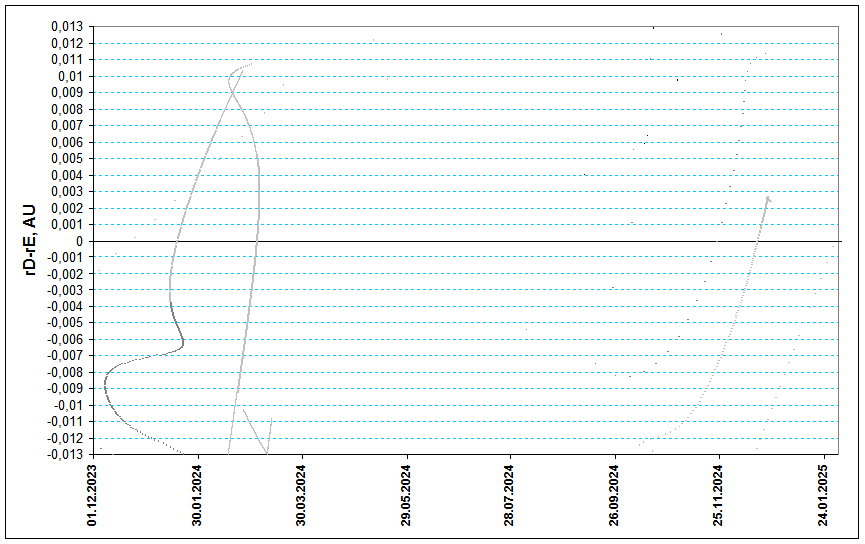
Fig. 7. Space-temporal projection of 46P-ids trails parts onto their minimal distance passages in 2024.
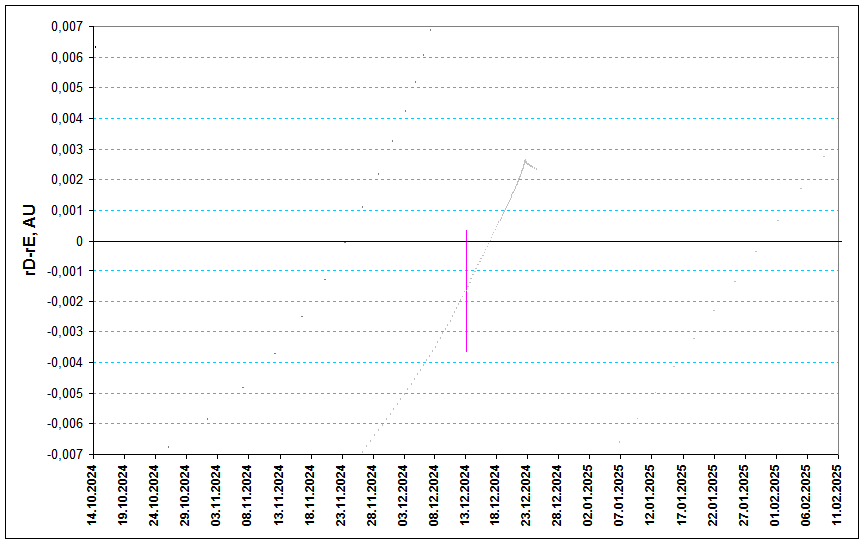
Fig. 8. Detailed space-temporal projection of 1974 trail parts onto their minimal distance passages in 2024.
In 2024 the Earth is expected to pass close to the 1974 trail of the comet 46P. The computed time of maximum is 2:21 UT on December 13 with the radiant RA=340.9°, Dec=+28.3°. Distance to the trail is 0.00165 AU, trail density is 54.6% of that for a 1 revolution Leonids trail, ejection velocity is 59.12 m/s. These parameters are in general more favorable than those for 2023 encounters and considering quite large size of the comet 46P, there are good chances for some low but detectable activity with mainly faint meteors though. Unfortunately this encounter is expected to occur under almost full Moon so bright moonlight will create additional problems for observations. However even despite this observations are highly recommended as meteor activity of the comet 46P stream has not ever been observed.
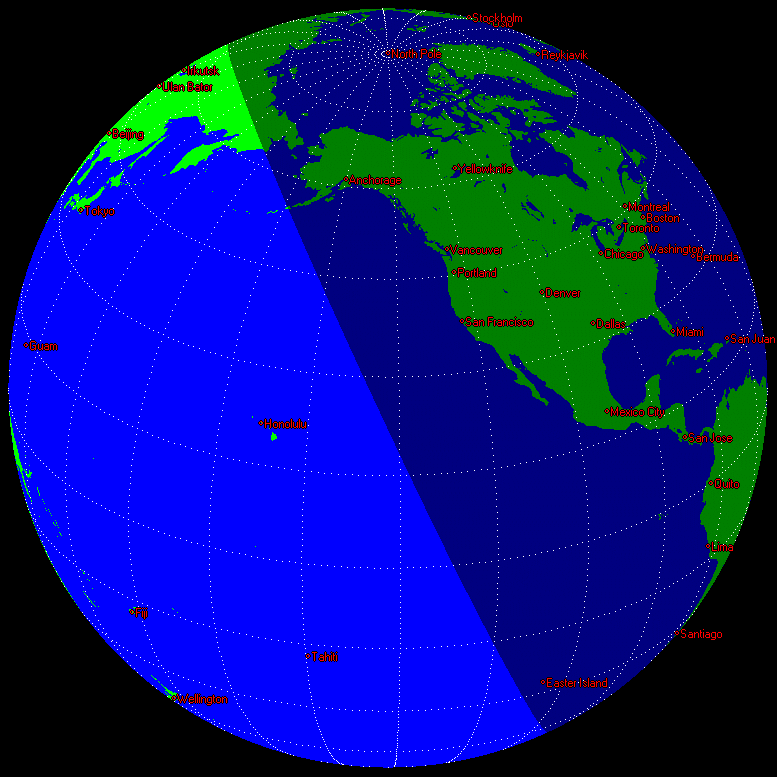
Fig. 9. The Earth as seen from coming 46P-ids meteors (RA=340.9°, Dec=+28.3°) during the expected maximum time of outburst from 1974 trail at 2:21 UT 13 December. The image is made using the software program Xearth 1.1.0 by Hewgill G.
In case the activity takes place at the predicted time, it could be observed mostly in Northern and Centras Americas excluding perhaps Alaska.
This forecasts for 2023 and 2024 are also published at
http://feraj.ru/Radiants/Predictions/46p-ids2023eng.html
http://feraj.ru/Radiants/Predictions/46p-ids2024eng.html
References
- Lyytinen, E.J., Van Flandern, T. Predicting the Strength of Leonid Outbursts. Earth, Moon, and Planets, 1998, P. 149–166.
- Jenniskens P. Meteor showers and their parent comets, 2006, 780 p.
- Kasuo Kinoshita, http://jcometobs.web.fc2.com/ [Orbital elements of the comet 46P/Wirtanen]






